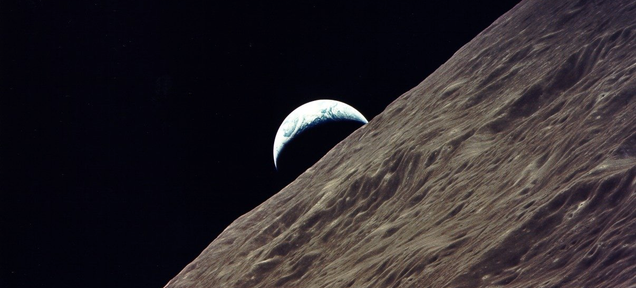
This weekend, astronomers announced the discovery
of the most Earth-like planet anyone has identified yet. The search of
habitable planets is intensifying—and with it, questions about whether
we're looking for the exoplanets the right way. For starters, figuring
out how Earth would look to aliens is actually pretty useful.
The
search for exoplanets is an incredibly complicated endeavor. In theory,
planets with life-sustaining habitats are out there, orbiting around
stars other than the Sun. But finding them is another matter entirely.
Among other issues, these planets would be outshone by their respective
suns, which is why NASA is dreaming up incredible spacecraft like the PlanetQuest, which shields its sensors from the blinding starlight to capture better photos of the planets around it.
But
what, exactly, should astronomers be looking for besides the obvious
existence of water? It's a question NASA has been asking for years. And
to find the answer, it's looking at the single habitable planet it knows
best: Earth. Back in 2009, the agency used its Deep Impact/EPOXI
spacecraft to look back at Earth to see what it would look like from
afar. And just last week, astrophysicists at Harvard proposed that we look for alien pollution, just like the stuff we make here on Earth.
Now,
a group of NASA astrophysicists have published a paper that explains
how they used an existing spacecraft to find out how alien life could
detect Earth. According to Daily Galaxy,
they did so by re-using existing data from NASA's Lunar Crater
Observation and Sensing Satellite, or LCROSS, which collided with the
Moon five years ago. Its mission was to find evidence of water—which it did! But as the research team explains in Detection of Ocean Glint and Ozone Absorption Using LCROSS Earth Observations, LCROSS inadvertently observed some fascinating things about Earth, too.
For
example, when Earth is seen as a crescent from the surface of the moon,
it reflects light from our oceans—an effect the researchers call Earth glint.
"Also, the Earth at crescent phase, thanks to the ocean, can be twice
as bright. If it's something you look for in exoplanets, it can be a
significant effect," one author told Daily Galaxy.
If alien astronomers are looking for Earth, this glint could be a major
sign that live exists on our small blue dot. Another hint? Ozone.
Astronomers have wondered if we could observe other planets' "glint" for years,
but this new research shows exactly what kind of tools we'd need to do
it. For instance, detecting Earth glint is also a matter of choosing the
right wavelength of light to look for—which means that this new
information could inform how telescopes are built from here on out.
By
looking at the Earth as though it were an exoplanet, astronomers are
getting a clearer picture of what they should be looking for, millions
of miles away. [Daily Galaxy; The Astrophysical Journal]


No comments:
Post a Comment